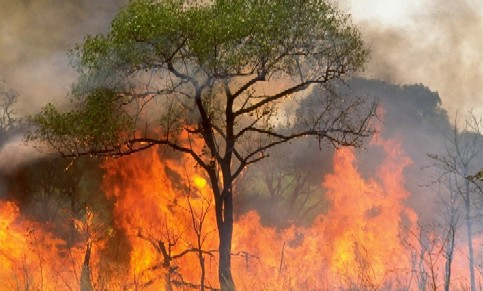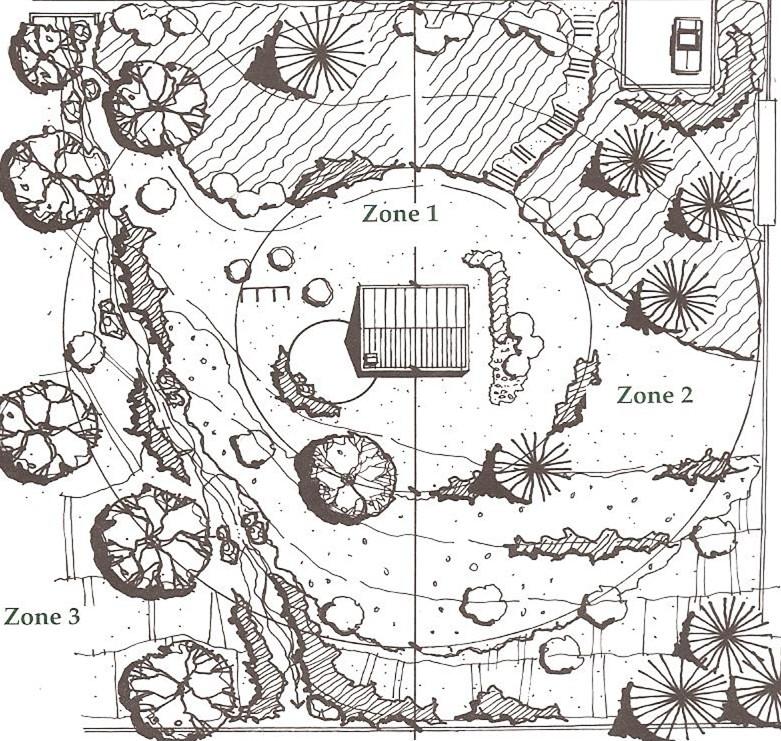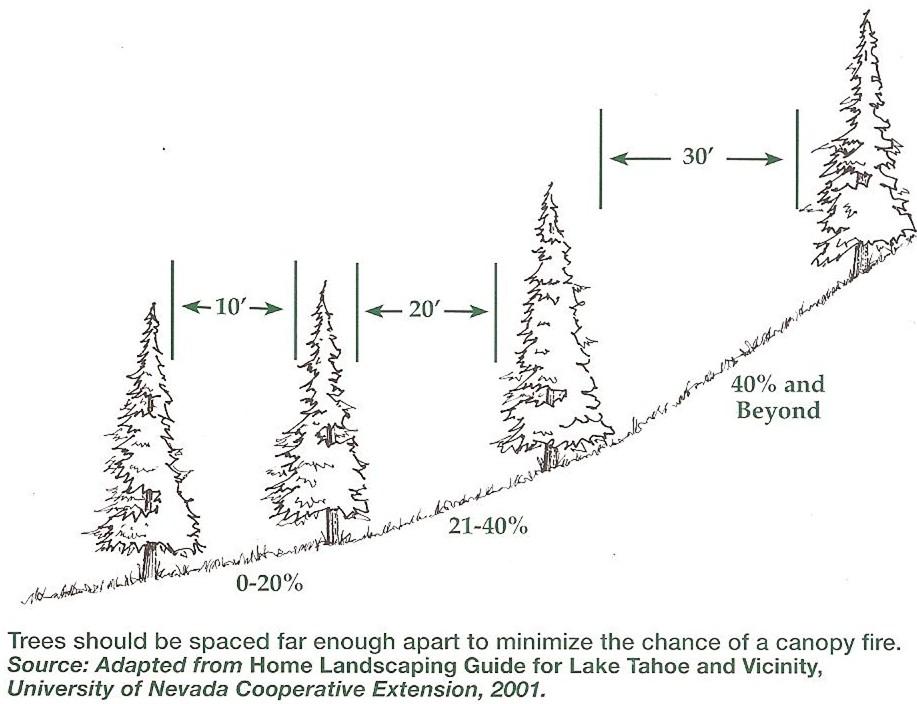
Over these past few years homes throughout California have been destroyed by the many wildfires that have raged through our state. There are many ways that homeowners can protect their loved ones and their homes through fire-wise landscaping and maintenance.
Designing a Fire-Resistant Landscape – The following tips are helpful considerations when designing your landscape.

- Firescaping Zone Theory – This utilizes four zones, including the Garden Zone closest to the house, Greenbelt/Fuel Break Zone, Transitional Zone, and a Native or Natural Zone.
- The Garden Zone extends 30 feet out from the house and contains plants that are fleshier and moist as well as deciduous trees. The goal is to create a space that is able to withstand flying embers and intense heat.
- The Greenbelt/Fuel Break Zone extends from 31 feet to 70 feet away from the house and increases in distance depending on the degree of slope found on the property. This area consists primarily of low growing, water thrifty and highly fire resistant plants. The goal is to stop a ground fire before it reaches the Garden Zone and to maintain fire resistance despite droughts, freezes, infestations or occupant neglect.
- The Transition Zone reaches from 71 feet to 120 feet away from the house. The distance increases due to slope. The goal of this zone is to dramatically slow a fire by using low growing plants that can survive in natural soils and can be weaned off of supplemental water once established while maintaining fire resistance.
- The Native Zone or Natural Zone extends out 120 feet and beyond away from the house. The primary goal of this area is to reduce the severity of a fire by removing dead wood and thinning plant material.

- Islands of Plants – Continuous lines of plants create a fire’s pathway through the landscape, use islands of plants instead.
- Less is More – Having less plants and allowing them to fill in over time will not only keep fire areas isolated but will also reduce the amount of watering and maintenance requirements.
- Retention Ponds – Utilize low areas of the property to catch and hold rain water and runoff.
- Plants – Deciduous plants are less flammable than evergreen trees. Broadleaf plants with moist, flexible and thick leaves are less flammable than plants with needle or blade-like leaves that are stiff, leather-like, and fine or thin. Avoid choosing plants that create a large amount of litter or produces sap that is gummy and resinous. Plants with fragrance or hairy leaves also tend to have a higher fuel content.
- Understory Plants – All tree litter should be removed and plants should be placed 10 feet past the dripline of the tree.
Resources:
- Firescaping by Doug Kent, Published by Wilderness Press, www.wildernesspress.com
